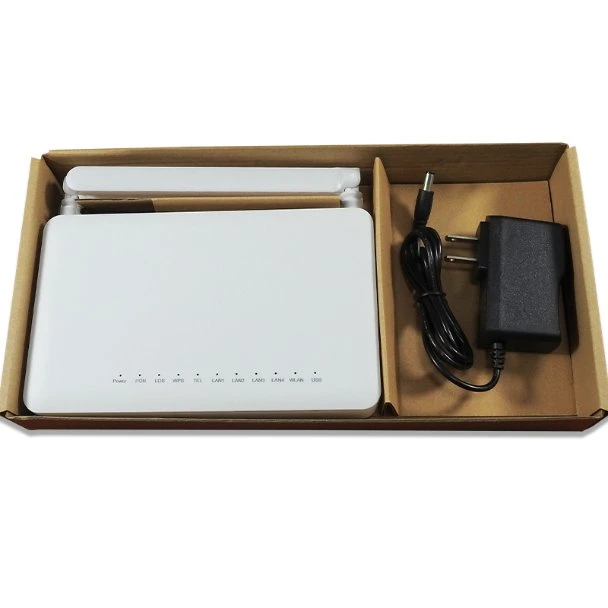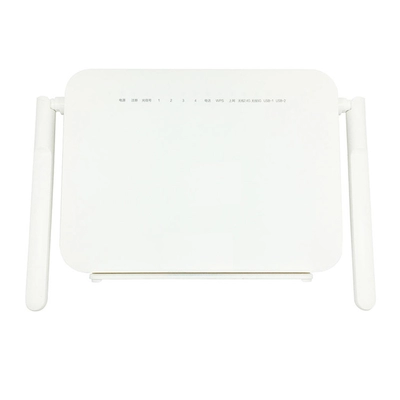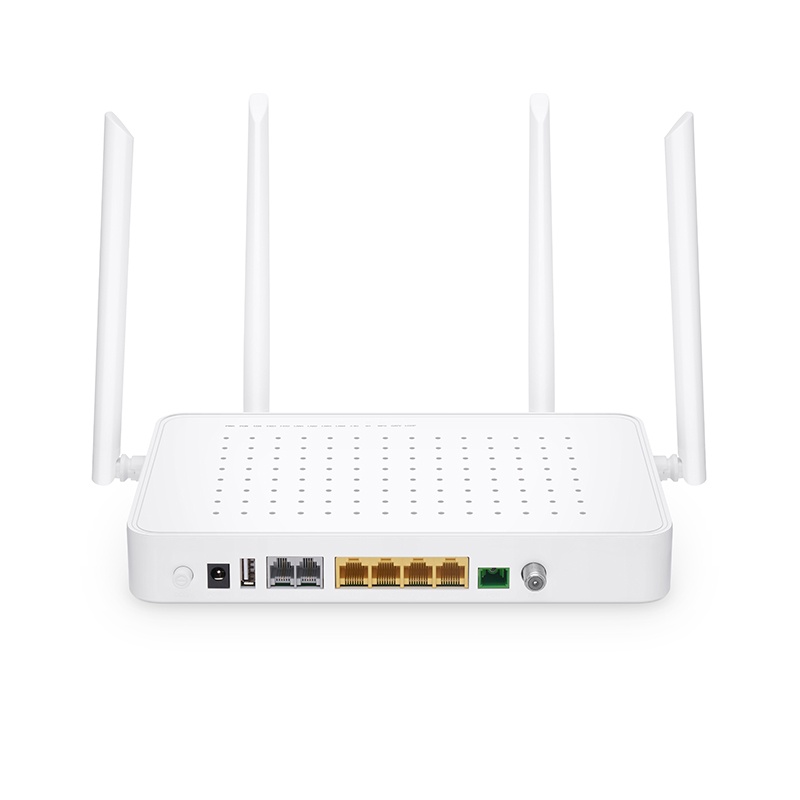Understanding ONU Technology and Its Role in Fiber Networks

Understanding ONU Technology
ONU, also known as Optical Network Unit, plays a pivotal role in the infrastructure of fiber networks.
The advancement of telecommunications is intricately linked to the development and implementation of ONU technology.
In contemporary communication systems, the significance of ONU in enabling the expansion and efficiency of fiber networks cannot be overstated.
Exploring the Basics
Fundamentals of ONU Technology
The Optical Network Unit (ONU) is a crucial component of fiber networks, responsible for converting optical signals into electrical signals that can be used by the end-user. It serves as the interface between the passive optical network and the customer's equipment, facilitating the seamless transmission of data.
In the context of fiber networks, ONU technology ensures that high-speed internet, voice, and video services are efficiently delivered to homes and businesses. Its role in managing and directing traffic within the network is essential for maintaining reliable and consistent connectivity.
Components of Passive Optical Networks
Passive optical networks (PONs) are a key part of modern telecommunications infrastructure, enabling the delivery of high-bandwidth services to end-users. PONs utilize optical splitters to enable a single optical fiber to serve multiple premises, reducing the amount of fiber and central office equipment required.
The relationship between ONU technology and passive optical networks is symbiotic. The ONU acts as the endpoint in a PON, receiving and transmitting data to and from customer premises. This integration allows for efficient utilization of network resources while providing high-speed connectivity to users.
Impact on Telecommunications
Enhancing Communication Infrastructure
The evolution of telecommunications has been significantly influenced by the revolutionary impact of ONU technology on communication infrastructure. By leveraging ONU technology, the efficiency and speed of telecommunications have experienced a remarkable enhancement, enabling the seamless transmission of high-bandwidth services to end-users.
ONU technology has played a pivotal role in streamlining communication infrastructure, ensuring that data, voice, and video services are delivered with unprecedented reliability and speed. This advancement has not only transformed the way information is transmitted but has also paved the way for innovative applications in various sectors, ranging from healthcare to education.
The integration of ONU technology in modern telecommunications systems has brought forth numerous benefits and advantages. It has facilitated the deployment of cost-effective solutions for high-speed internet access while optimizing network resources. Additionally, incorporating ONU technology in communication networks has led to improved scalability and flexibility, catering to the evolving demands of a digital society.

Integration of ONU in Telecommunications
The integration of ONU technology in modern telecommunications systems is a strategic move towards embracing the future of communication infrastructure. By incorporating ONU technology, communication networks can harness its potential to deliver enhanced connectivity and bandwidth management capabilities. This integration empowers service providers to offer reliable and high-performance communication services while efficiently utilizing network resources.
Furthermore, the seamless integration of ONU technology enables telecommunications systems to adapt to evolving technological landscapes. The benefits extend beyond traditional voice and data services into emerging fields such as Internet of Things (IoT) and smart city initiatives. As a result, ONU technology plays a crucial role in shaping the evolution of telecommunications by providing a solid foundation for future advancements.
Advancements and Applications
Technological Advancements in ONU
In the realm of ONU technology, recent advancements have propelled the capabilities of fiber networks to new heights. These innovations have focused on enhancing the efficiency and performance of ONUs, thereby contributing to the seamless delivery of high-bandwidth services to end-users.
One notable advancement is the development of enhanced signal processing algorithms within ONUs, optimizing the conversion of optical signals into electrical signals. This has led to improved data transmission rates and reduced latency, significantly enhancing the overall user experience.
Furthermore, advancements in ONU technology have paved the way for enhanced security features, ensuring robust protection against potential cyber threats and unauthorized access. The integration of advanced encryption protocols within ONUs has bolstered the security posture of fiber networks, instilling confidence in users regarding the privacy and integrity of their data transmissions.
Looking ahead, the potential applications and future developments of ONU in fiber networks are vast. From leveraging artificial intelligence for intelligent traffic management to exploring energy-efficient designs for sustainable deployment, ONU technology continues to be at the forefront of innovation in modern telecommunications infrastructure.
Practical Applications of ONU
The practical applications of ONU technology are diverse and far-reaching across various communication scenarios. In residential settings, ONUs enable seamless delivery of high-speed internet, supporting bandwidth-intensive activities such as streaming high-definition video content and online gaming. Moreover, they play a crucial role in facilitating reliable voice over IP (VoIP) services for clear and uninterrupted communication.
In enterprise environments, ONUs empower businesses with scalable connectivity solutions that cater to growing network demands. They facilitate secure virtual private network (VPN) connections and support cloud-based applications with low-latency data transmission capabilities.
The practical benefits derived from ONU technology extend beyond traditional telecommunications into emerging fields such as smart city initiatives and industrial automation. By providing a robust foundation for high-speed connectivity and data management, ONUs contribute to driving innovation across diverse sectors while meeting evolving communication needs.

Innovations and Potential
Future Innovations in ONU Technology
As technology continues to advance, the future holds promising innovations in ONU technology that will further revolutionize fiber networks and telecommunications. One area of development is the integration of artificial intelligence (AI) to enhance the intelligence and automation capabilities of ONUs. By leveraging AI algorithms, ONUs can intelligently manage network traffic, optimize bandwidth allocation, and proactively identify and mitigate potential issues, thereby improving overall network efficiency and user experience.
Another avenue for innovation lies in the exploration of eco-friendly designs for ONUs, aiming to minimize energy consumption and environmental impact. Sustainable deployment practices coupled with energy-efficient components can contribute to a more environmentally conscious approach to telecommunications infrastructure.
Unleashing the Full Potential of ONU
Maximizing the potential of ONU technology entails embracing its versatility across diverse communication needs. The opportunities for further development lie in expanding the application of ONUs beyond traditional data and voice services. As telecommunications evolve, ONUs can play a pivotal role in supporting emerging technologies such as 5G networks, edge computing, and IoT devices. This expansion will unlock new possibilities for seamless connectivity and data management, shaping the future landscape of telecommunications infrastructure.
The potential for advancements in ONU technology underscores its significance as a driving force behind the evolution of fiber networks and telecommunications. By continually innovating and harnessing the full potential of ONU technology, we pave the way for a connected world that meets the dynamic demands of modern communication.
The Crucial Element in Modern Communication
Significance of ONU in Modern Communication
In the landscape of modern communication, ONU technology stands as a pivotal element driving the evolution of fiber networks and telecommunications. Its role is indispensable for the seamless delivery of high-bandwidth services to end-users, shaping the future of communication infrastructure. Understanding the fundamental principles of ONU technology is essential for comprehending its impact on the advancement of telecommunications.
See Also
2024: Cost-Effectiveness of Singlemode vs Multimode Fiber Optic Cables
Understanding ADSS Cable and Fiber Optic Strength Member Solutions
Comparing the Advantages of FRP and Steel for ADSS Cable: A Comprehensive Guide
Exploring LC Series Fiber Optic Breakout Cables and Duplex Multi-Mode Fiber Solutions
LC Series Fiber Adapter Panels: OS2 Single Mode vs. OM4 Multimode Solutions
About US
Follow Us
AnetFiber company's main products are indoor and outdoor optical fiber cables, outdoor waterproof pre-connected fiber-to-the-home products, PLC optical fiber splitters, optical fiber jumpers and pigtails, MTP®/MPO high-density big data product solutions, optical fiber field quick connectors and research and development molding, injection molding and production of optical fiber distribution boxes, optical fiber chassis cabinets, the market has expanded to the world, Europe, America, Asia, the Middle East and Latin America.
Address
Shenzhen City, Baoan District, Yanluo Street, Tangxiayong Community, Yangyong Industrial Road, Tonggangda New Energy Vehicle Park 406
Contacts
+86 199 2655 3586

